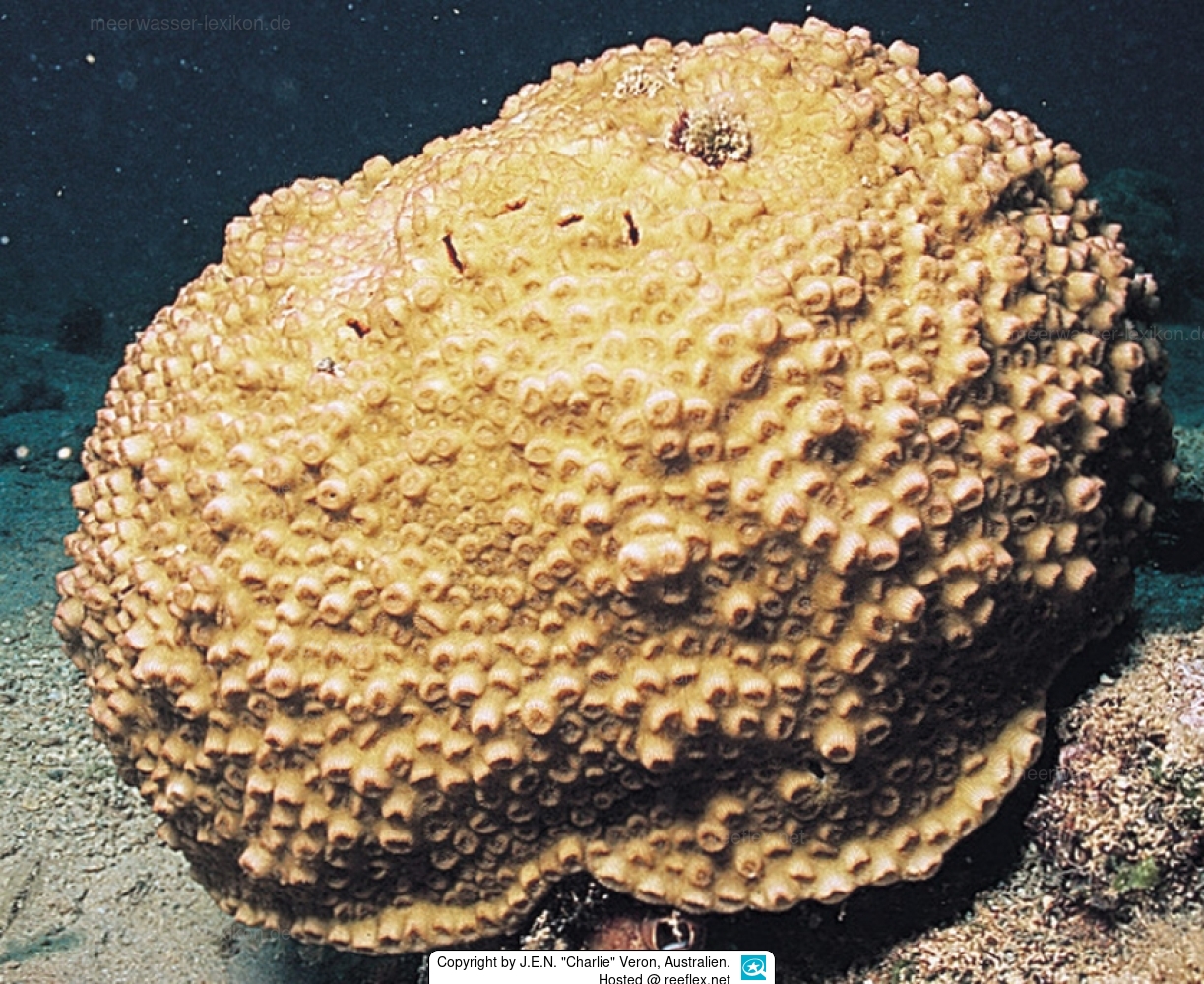Info
Nemenzo, 1959
Characters: Colonies are massive and mostly spherical. Corallites are circular and closely compacted. Corallites are small (3-4 mm diameter), exsert and have very thick walls. Corallites may face different directions according to place of budding. Septa are evenly spaced and strongly alternate. Costae are strongly beaded. Paliform crowns are well developed. Columellae are small.
Colour: Tan or cream, sometimes with dark centres.
Habitat: Shallow environments, especially reef flats.
Abundance: Rare.
Similar species: Favia stelligera , Montastrea curta







 Dr. John Edward Norwood "Charlie" Veron, Australien, Australien
Dr. John Edward Norwood "Charlie" Veron, Australien, Australien





